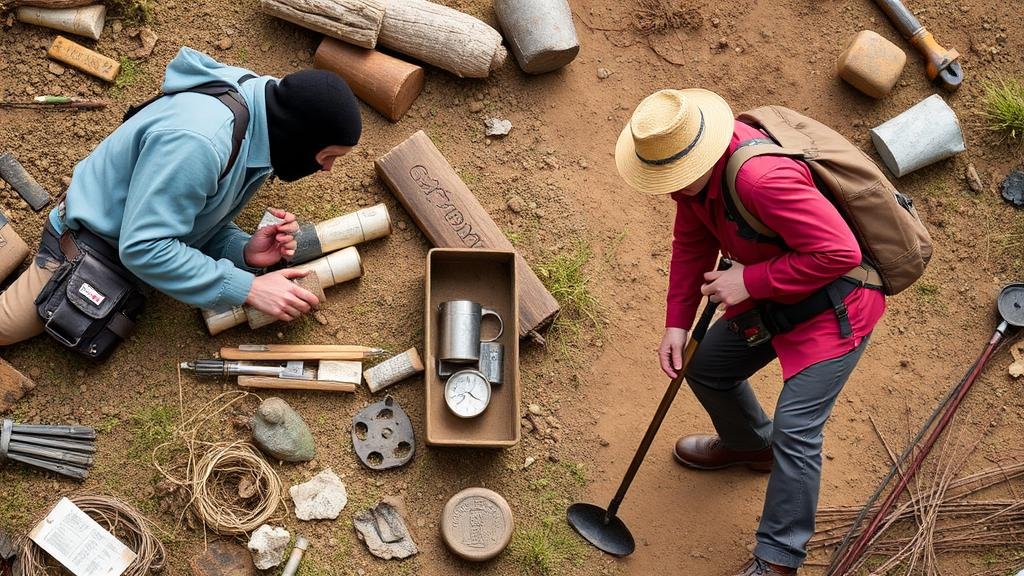Metal Detecting Along Historic Trade Routes for Valuable Relics
Metal Detecting Along Historic Trade Routes for Valuable Relics
Metal detecting has gained popularity as both a hobby and a means to uncover historical artifacts, particularly along historic trade routes. These pathways were crucial for the exchange of goods and ideas, often leading to the loss of items that today can be valuable for collectors, historians, and archaeologists. This article delves into the significance of metal detecting on historic trade routes, exploring techniques, legal considerations, and notable findings.
The Importance of Historic Trade Routes
Historic trade routes, such as the Silk Road, the Spice Route, and the Trans-Saharan Trade, were more than mere pathways for commerce; they were avenues of cultural exchange. e routes facilitated not only the trade of goods but also the mingling of cultures, religions, and technologies. As such, they are rich in potential discoveries for metal detecting enthusiasts.
For example, the Silk Road connected Asia with Europe, allowing the exchange of silk, spices, and precious metals. The trade activities often led to items being lost or abandoned, including coins, jewelry, and tools. Archaeological evidence indicates that over time, many of these trade routes became littered with artifacts that are invaluable for studying history.
Techniques for Metal Detecting
Effective metal detecting requires not just the right equipment but also an understanding of how to use it in various environments. The following techniques can enhance the chances of finding relics along historic trade routes:
- Research: Understanding the history of a specific trade route can guide detectorists to likely hotspots for findings. This includes studying old maps, historical texts, and previous archaeological reports.
- Site Selection: Areas where travelers congregated, such as rest stops or trade hubs, are often the most promising. Locations near rivers or towns where goods were transferred can yield a wealth of artifacts.
- Equipment Use: Employing advanced metal detectors can increase the likelihood of success. Multi-frequency detectors are especially effective in varying soil types and conditions.
Understanding Legal Considerations
Before embarking on a treasure hunt along historic trade routes, it is vital to understand local laws regarding metal detecting and artifact recovery. Many countries and regions have strict legislation governing the discovery and ownership of historical artifacts. For example:
- Permission: Often, detecting on private land requires explicit permission from the landowner.
- Reporting Finds: In many jurisdictions, significant finds must be reported to local authorities or archaeological institutions to preserve the cultural heritage.
- Regulations: National and local laws may dictate restrictions on metal detecting in certain protected areas, such as archaeological sites and national parks.
Notable Case Studies
A number of remarkable finds have resulted from metal detecting along historic trade routes worldwide. One celebrated example is the discovery of a 1,500-year-old brass bell near a former trading post along the Silk Road. This bell, complete with inscriptions, not only provided insights into the metalworking techniques of the time but also shed light on religious practices among traders.
In another instance, a detectorist in Europe unearthed a collection of Roman coins dated back to the 3rd century AD while searching along a well-known route used once by Roman armies. collection included over 200 coins, providing invaluable evidence of the economic exchanges during the Roman Empire. Such findings emphasize the importance of these routes in the dissemination of wealth and culture.
Challenges Faced by Detectorists
Metal detecting along historic trade routes is not without its challenges. Detectorists often contend with:
- Environmental Factors: Weather conditions and terrain can impact the effectiveness of the metal detection process. Areas with dense vegetation or challenging landscapes may hinder the detection process.
- Equipment Limitations: Not all metal detectors are created equal; some may struggle to identify specific types of metals or may not function well in particular soil conditions.
- Legal Complications: The complexity of laws surrounding metal detecting can lead to unintentional violations, especially for those new to the hobby.
Conclusion and Actionable Takeaways
Metal detecting along historic trade routes offers a rich opportunity for uncovering valuable relics that shed light on our shared history. By employing proper techniques, understanding legal frameworks, and learning from notable successes, enthusiasts can responsibly explore and contribute to cultural heritage. As a starting point:
- Research historic trade routes relevant to your area.
- Invest in quality equipment and become proficient in its use.
- Familiarize yourself with local laws and obtain necessary permissions.
- Join metal detecting clubs or forums for shared knowledge and support.
In pursuit of hidden relics, let us balance our passion for discovery with respect for history and the laws that help protect it.



